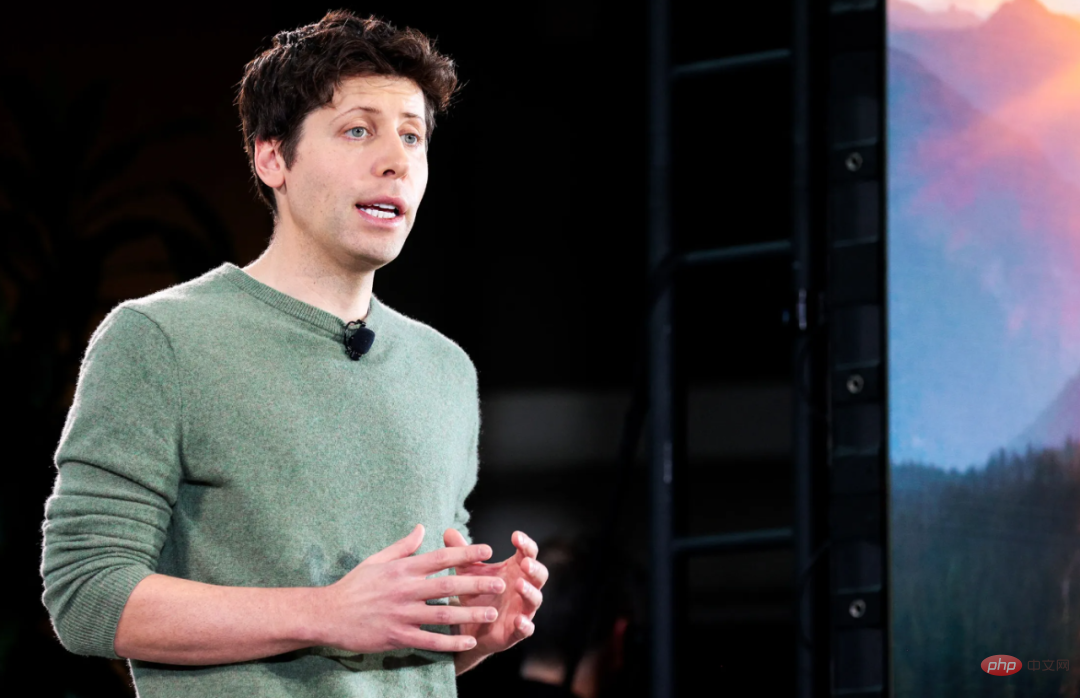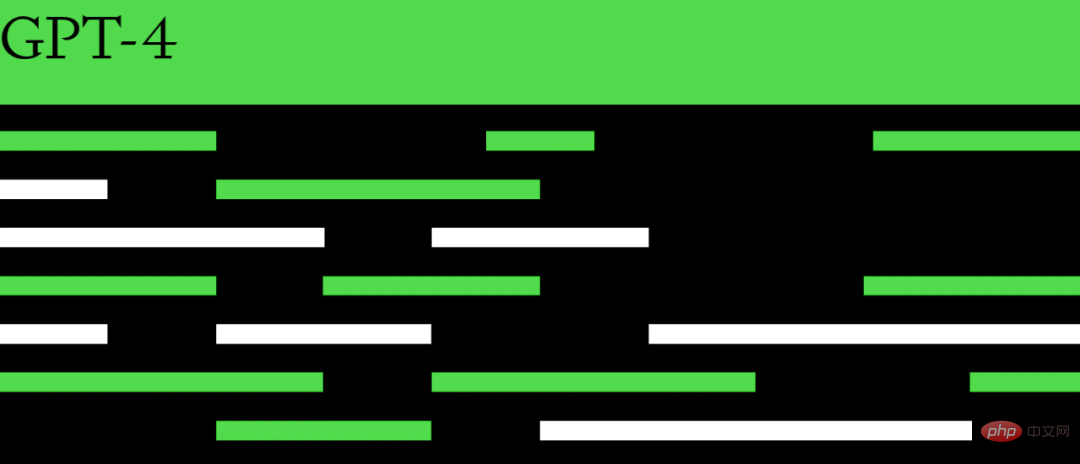
In recent months, OpenAI ChatGPT’s powerful generative conversation capabilities have sparked new interest and investment in AI. With the ChatGPT-like research and development boom at home and abroad, conversational AI and the large models behind it are becoming more and more optimistic.
But in a video speech from MIT last week, OpenAI CEO Sam Altman made another statement. He warned that the research strategy that gave birth to ChatGPT was over. It's unclear where future progress will occur.

Over the past few years, OpenAI has developed a new approach by taking existing machine learning algorithms and scaling them to previously unimaginable scale. A series of remarkable progress have been made in the field of language-related artificial intelligence. The latest development, GPT-4, could be trained using trillions of text words and thousands of powerful computer chips.
GPT-4 has excellent performance on a variety of tasks such as language, mathematics, programming, vision, medicine, law, and psychology. Sam Altman said that making the model larger (such as a giant model) will not bring further new progress.

##Sam Altman’s comments illustrate the race to develop and deploy new AI algorithms There was an unexpected twist. Since the launch of ChatGPT in November last year, Microsoft has used the underlying technology to add chatbots based on it in Bing search, and Google has also launched a Bard competing product. Many people are eager to try new chatbots to help complete work or personal tasks.
Meanwhile, a host of well-funded startups, including Anthropic, AI21, Cohere and Character.AI, are pouring resources into building ever-larger algorithms in an effort to catch up with OpenAI.
However, Sam Altman’s words seem to indicate that GPT-4 may be the last major development in OpenAI’s strategy of developing larger models and feeding them more data. Some clues can also be seen from the rumors related to GPT-5 that he personally refuted. He said that he is not currently training GPT-5 and will not be training in the short term. In the paper describing GPT-4, OpenAI estimates that there will be diminishing returns in scaling the model. There are also physical limits to how many data centers OpenAI can build and how quickly they can be built.
In addition to the reasons for the large model design and architecture itself, the huge cost is also a major reason. According to reports, ChatGPT requires at least 10,000 GPUs for training and more resources to ensure continuous operation. Nvidia’s latest H100 GPU, designed for AI and high-performance computing, is priced at a whopping $30,603, which is undoubtedly expensive.
Altman himself admitted that the training of GPT-4 cost more than $100 million. Cohere co-founder Nick Frosst (who previously worked on AI at Google) says Altman’s idea that scaling doesn’t always work rings true.
. He also believes that the progress of Transformer (the core machine learning model type of GPT-4 and competing products) has exceeded the scope of expansion. In addition to adding more parameters to the model, there are many other ways to make the Transformer better and more useful. New AI model designs or architectures and further fine-tuning based on human feedback
become what many researchers are already working on Promising directions for exploration. Musk named the AI project TruthGPT Musk’s side, although he said he was worried that GPT-4 would cause social problems, and signed a moratorium on development than GPT- 4 More robust systems for at least six months. But the reality is that Musk is working on a new artificial intelligence startup, X.AI, to compete directly with OpenAI.
Musk has reportedly acquired tens of thousands of GPUs from Nvidia, systems that power the computing required for intensive tasks such as artificial intelligence and high-end graphics processing.

Musk confirmed reports that he plans to create an artificial intelligence startup to compete with ChatGPT. Musk announced the plan in an interview with Fox and said, "I will create an artificial intelligence platform called TruthGPT, or an artificial intelligence that maximizes truth-seeking and can understand the nature of the universe. I Think this may be the best path to (AI) safety, in the sense that an AI that cares about understanding the universe is less likely to exterminate humanity because we are an interesting part of the universe."
Musk also said in the interview that he believes artificial intelligence has the potential to destroy civilization, no matter how small (its power).
Previously, Musk co-founded OpenAI in 2015 with current OpenAI CEO Sam Altman and others, but Musk left the company’s board of directors in 2018. It is understood that the reason Musk stated at the time was to avoid potential conflicts of interest with Tesla, but Musk later said there were other reasons. Another reason was that he disagreed with some things the OpenAI team was doing.
Separately, Semafor reported in March that Musk tried to take over as CEO of the company in 2018, but left after Altman and others rejected it.
Musk has repeatedly criticized OpenAI since leaving its board. As recently as February this year, he also stated that the current OpenAI is not what he hoped for at all, and called OpenAI a Microsoft-controlled, closed-source, profit-maximizing company."
Faced with Musk’s repeated blows, Altman said that even so, he still regards Musk as one of his idols, and said, “I believe Musk does have a strong interest in AGI. It’s understandable that security feels stressful.”
It’s worth mentioning that this is not the first time Musk has considered building TruthGPT. He tweeted in February that what we need is TruthGPT.

Regarding more details about TruthGPT, Musk did not reveal any more information, and we can expect more in the future.
The above is the detailed content of OpenAI CEO: The era of giant AI models is over, Musk's TruthGPT exposed. For more information, please follow other related articles on the PHP Chinese website!
 How to bind data in dropdownlist
How to bind data in dropdownlist
 How to solve Permission denied
How to solve Permission denied
 Edge browser cannot search
Edge browser cannot search
 How to solve 500error
How to solve 500error
 How to withdraw cash from Yiouokex
How to withdraw cash from Yiouokex
 How to set up linux firewall
How to set up linux firewall
 The difference between while loop and do while loop
The difference between while loop and do while loop
 What should I do if the docker container cannot access the external network?
What should I do if the docker container cannot access the external network?




